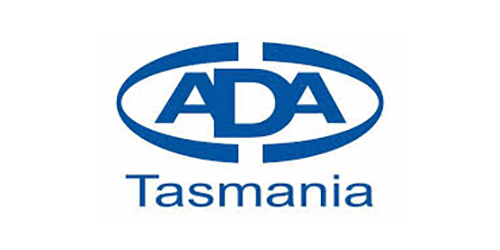
Why Tasmanian dentists need to brush up on vaping
Posted on September 25, 2024 By Colin
To the President, ADA Tasmania branch
Dear Dr McCracken,
I am writing this open letter to you about the recent ADA Tasmania media statement on vaping. The statement does not align with the latest empirical evidence on vaping and its role in smoking cessation. Moreover, the prescription-only model that you advocate has been a significant failure in practice, restricting access for adult smokers while inadvertently fuelling a black market that freely sells to young people.
As a clinician, academic and researcher in smoking cessation and tobacco harm reduction for 40 years, I have contributed to the development of the national smoking cessations guidelines for the Royal Australian College of General Practitioners and served as a Conjoint Associate Professor in the School of Public Health and Community Medicine at the University of New South Wales. I have no financial or commercial ties to any electronic cigarette or tobacco company.
Below are my specific concerns with your media release.
1. “there is not sufficient evidence that e-cigarettes are an effective smoking cessation tool’
This statement is inaccurate. Vaping is widely recognised as the most effective and most popular quitting aid in Australia and many other Western countries.
- A Cochrane Review (2024) found “high certainty” evidence that vaping is 59% more effective than nicotine replacement therapy (NRT) in helping people quit smoking. (Lindson 2024) Another Cochrane Review (2023) identified nicotine vapes and varenicline (Champix) as the two most effective single treatments for smoking cessation. (Lindson 2023)
- Real-world evidence from observational studies, population data, and national declines in smoking rates supports these findings. (evidence review)
2. “Harmful substances have been found in e-cigarette liquids”
While this is technically true, it lacks important context: "the dose makes the poison." (Bus) Harmful substances exist in the air we breathe and in tap water, but they are only dangerous at doses known to cause harm.
Vapour from e-cigarettes typically contains about 100-150 chemicals, (Heywood; Sleiman; Margham) compared to 7,000 in tobacco smoke. Most of these chemicals are present at less than 1% of the levels found in smoke and are well below occupational safety limits. (PHE; Heywood)
3. “vapours produced, which could increase the risk of lung disease, heart disease and cancer”
This phrasing implies a much higher risk than current evidence supports.
- Lung disease. To date, research has not found any significant lung damage from vaping nicotine in the short to medium term. Lung health improves significantly in smokers who switch to vaping. (evidence review)
- Heart disease. There is currently no definitive evidence that vaping increases cardiovascular risk. On the contrary, switching from smoking to vaping has been shown to reduce cardiovascular risk. (evidence review)
- Switching from smoking to vaping dramatically lowers cancer risk. Estimates suggest that the cancer risk from vaping is less than 0.5% of that from smoking. (Stephens) According to Cancer Research UK, “There is no good evidence that vaping causes cancer.” (CRUK)
- Oral health. Vaping can lead to oral health effects, but this is far less than from smoking. (Iacob) A review of 98 studies concluded that “switching to e-cigarettes may mitigate oral symptomatology for conventional smokers”. (Yang)
4. “people who take up the use of e-cigarettes are around three times more likely to take up smoking”
Studies indicate that young people who experiment with vaping are more likely to try cigarettes (and alcohol and illicit drugs). However, this does not mean that vaping causes young people to take up regular smoking. The evidence suggests that vaping is diverting young people away from smoking. In countries where vaping is readily available, such as the UK, US, and New Zealand, youth smoking rates have declined more rapidly. (evidence review)
5. “former smokers who use e-cigarettes are more likely to relapse”
The claim that vaping causes relapse is unsupported. Some studies have found that former smokers who vape are more likely to relapse than those who don’t, but this is an association, not causation. (evidence review)
The prescription-only model
You argue that a prescription-only model will ensure access to vaping devices is medically supervised and will reduce underage vaping. However, this regulatory approach has failed to achieve either goal.
- Only 6.8% of adult vapers obtained a prescription in 2023. (NDSHS 2022-23) The vast majority of Australia’s 1.5 million adult vapers have rejected the prescription model, and most doctors are unwilling to prescribe.
- A thriving and violent black market has emerged, controlled by criminal gangs, which has made it easier for young people to access vapes. These unregulated products often contain high nicotine levels and pose greater risks than legally regulated alternatives. (evidence review)
History shows that prohibition-style interventions, such as the current prescription model, are unlikely to reduce the availability of illegal vapes.
A more effective approach would be to adopt a tightly regulated adult consumer model, with licensed retailers, strict age verification, and harsh penalties for underage sales, as for tobacco and alcohol. This would align Australia with Western nations like New Zealand, the UK, and the EU, improving access for adult smokers while reducing the availability of black market products to minors.
I am happy to discuss these issues further and look forward to your response.
Kind regards,
Dr. Colin Mendelsohn
www.colinmendelsohn.com.au
25 September 2024
Media release
ADA Tasmania backs strengthened vaping legislation in Tasmania. Media release 24 September 2024
Open letter to ADA Tasmania President, Dr Katelyn McCracken. 25 September 2024
Go to Top